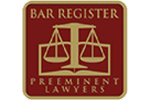for Our Clients Since 1935
Trip and Fall Cases

At Michaels Bersani Kalabanka, experience has taught our Syracuse trip-and-fall lawyers that these type of cases generally fall into two main categories: (1) uneven surfaces where people walk, including bunched carpets, step-offs in floors, differentials between sidewalk slabs, or cracked, uneven, or deteriorated sidewalks or pavement, or uneven steps or stairs, and (2) objects left on the ground or floor where people are prone to trip over them.
Whether your case involves an uneven or cracked walking surface or an object left where you tripped over it, the rules of law are essentially the same. In a trip and fall cases, the premises owner is liable only if he failed to take “reasonable” measures to assure that his property was “reasonably” safe. The main issue, then, is what is “reasonable”. Juries differ about what is “reasonable”, so these cases are sometimes hard to predict.
Trip-and-fall lawyers in and around Syracuse or anywhere in New York usually must often prove “notice” to win the case. Specifically, most trip and fall cases turn on whether the property owner had “notice” of the tripping hazard. The issue of whether the owner had “notice”, in legal talk, means whether he “knew or should have known” of the tripping danger. If the injured trip-and-fall victim can prove “notice”, and the owner failed to fix or remedy the tripping hazard, then it follows that the owner did not act reasonably, failed in his duty, and is liable for the injuries.
“Notice” can also be shown by what is known as a “recurrent condition”. For example, if someone trips on a the lip of a carpet that was curled up, thus causing a tripping hazard, perhaps that carpet lip had only just curled up a short while before the tripping incident. That would not be sufficient “notice” to hold the premises owner liable. It would be hard to prove the owner “knew or should have known” that the carpet had curled up just a short while ago. But if that same carpet had a tendency to curl up, and this had happened time and time again in the past, then the property owner had constructive notice of the “recurrent condition”. The owner can be held liable for failing to replace the carpet or nailing that corner of the carpet down. Trip and fall lawyers serving Syracuse residents can and should always explore whether the facts of the accident can support a “recurrent condition” theory of liability.
If the property owner created the hazard through some affirmative act, then it is not generally necessary to show he had “notice” of the defect. For example, if a property owner builds a step that later collapses under the weight of a guest, the owner may be held liable for the resulting injuries even though the owner did not have “notice” that the step was a hazard. The premises owner is liable not because he was aware of the hazard, but because he negligently built the step. He obviously did not follow good and safe step-building practices.
Other issues that come up in trip-and-fall cases are: Was there a good reason for the object tripped over to be there? Was it better and safer place to put it? Could a barrier or a warning sign have been placed near the tripping hazard? Did poor lighting play a part in the trip-and-fall victim’s failure to notice of see the danger? A competent Syracuse trip-and-fall attorney will explore and investigate all these issues.
Our attorneys have recovered millions of dollars for clients injured in trip-and-fall accidents and for other injuries to cover their medical bills, lost earnings, pain and suffering, and more.
FAQs About Trip-and-Fall Injury Cases
How to win Your New York Slip or Trip and Fall Case











